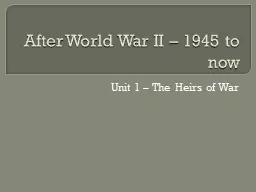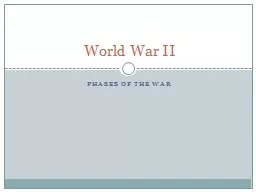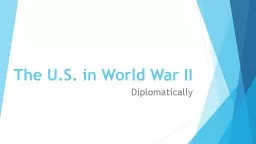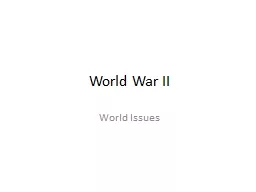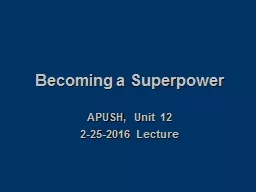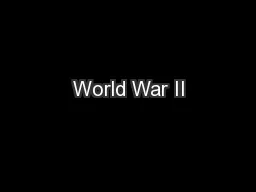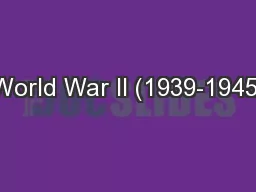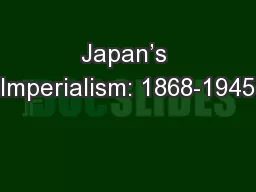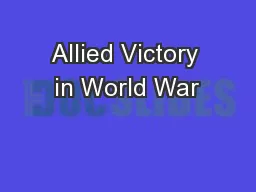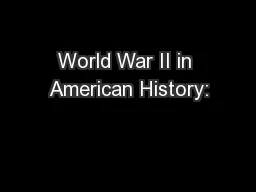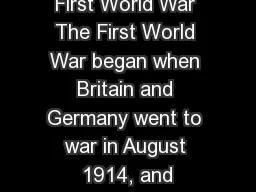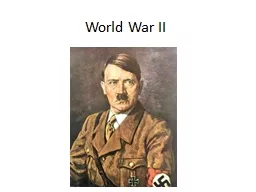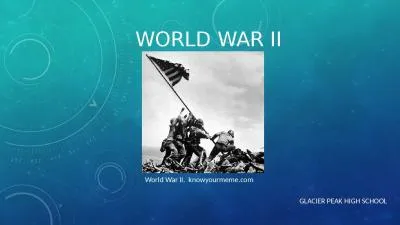PPT-After World War II – 1945 to now
Author : myesha-ticknor | Published Date : 2017-10-12
Unit 1 The Heirs of War After WWII the US was only major power whose territory had not been destroyed by war produced more than ½ industrial and agriculture output
Presentation Embed Code
Download Presentation
Download Presentation The PPT/PDF document "After World War II – 1945 to now" is the property of its rightful owner. Permission is granted to download and print the materials on this website for personal, non-commercial use only, and to display it on your personal computer provided you do not modify the materials and that you retain all copyright notices contained in the materials. By downloading content from our website, you accept the terms of this agreement.
After World War II – 1945 to now: Transcript
Download Rules Of Document
"After World War II – 1945 to now"The content belongs to its owner. You may download and print it for personal use, without modification, and keep all copyright notices. By downloading, you agree to these terms.
Related Documents

